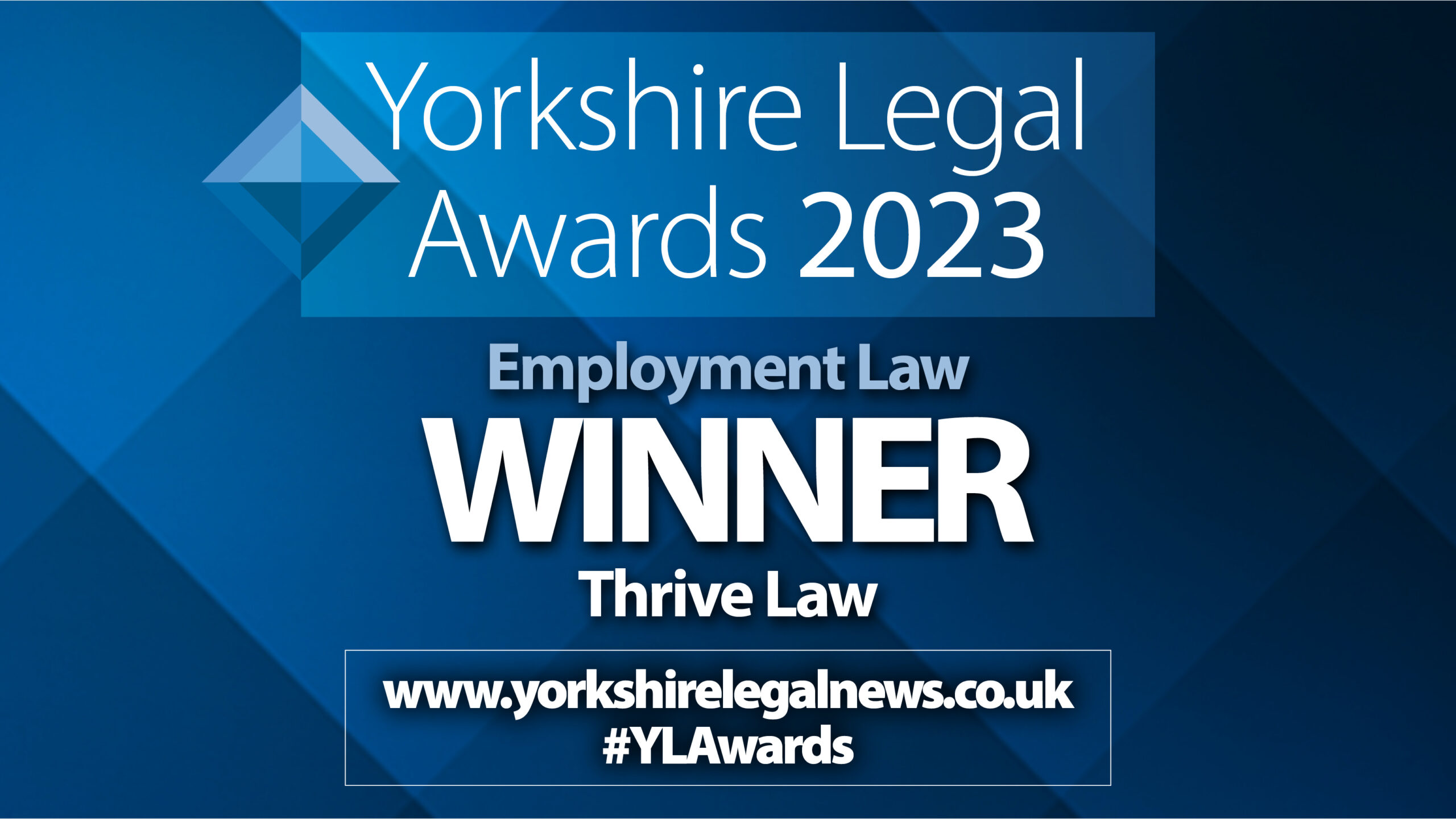Discrimination
Discrimination takes many forms. An employee or worker with a protected characteristics can be discriminated against directly or indirectly, or might experience bullying or harassment in the workplace because of that characteristice.
The protected characteristics are:
- Age
- Disability
- Gender reassignment
- Race
- Religion or belief
- Sex
- Sexual orientation
- Marriage and civil partnership
- Pregnancy and maternity
Contact Us
We have covered certain examples of discrimination separately below. Unfair or unkind treatment will only amount to discrimination if it relates to a protected characteristic.
How we can help employers
If you are being accused of discrimination, we can help an employer to defend such claims at any stage. This can either involve a proactive approach, in trying to deal with the allegations at the initial grievance stage and managing an appropriate outcome, or we can assist in representing a respondent in the Employment Tribunal process.
We also have our more strategic ED&I support, and strategic coaching, which is aimed at trying to reduce allegations of discrimination in the workplace.
How we can help employees
If you are an employee and you feel you have been the subject of discrimination because of any of the protected characteristics listed above, please get in touch with us at [email protected] and arrange a free initial consultation, where a solicitor can consider your claim and how best to proceed with this.
Discrimination can come in different forms
Direct discrimination
Direct discrimination occurs if an individual is treated less favourably than others because of a protected characteristic. For example, being rejected for a job because of your religious views or because or your sexual orientation.
Indirect discrimination
An individual could be indirectly discriminated against if their employer is putting rules or arrangements in place that apply to everyone, but which puts that individual or someone with a protected characteristic at an unfair disadvantage. For example, requiring a job to be done full-time rather than part-time would adversely affect women because they generally have greater childcare commitments than men. Such a requirement would be discriminatory unless it can be justified. We have a blog on a case which expressly deals with this scenario, here.
Harassment
Harassment can occur where a person in the workplace is carrying out unwanted behaviour linked to an individual’s protected characteristic that violates their dignity or creates an offensive environment for them. This includes sexual harassment.
Sexual harassment is where an employee is subject to unwanted conduct of a sexual nature which has the purpose or effect of either violating their dignity, or creating an intimidating, hostile, degrading, humiliating or offensive environment
Victimisation
An individual could be being victimised if they are being treated unfairly because they have complained about discrimination or harassment.
Age discrimination
As an employee, apprentice, worker or a job applicant, you are entitled not to be discriminated against because of your age.
Acas has provided a helpful guide on age discrimination, click here to view the guide.
Direct discrimination occurs where you are treated less favourably because of your age e.g. where it is assumed that, because of your age, you cannot manage a team and therefore you are not offered a promotion.
An employer will also be discriminating if it instructs, causes or induces another to commit age discrimination, such as by instructing HR not to include younger individuals in consideration for promotion, or suggesting that older employees are approached first for prospective voluntary redundancy.
Indirect discrimination occurs where, a particular provision, criterion or practice is in place which puts you at a particular disadvantage due to your age even if it applies to everyone equally. To avoid claims of discrimination, selection criteria, policies and rules for job applicants should be neutral and carefully drafted. For example, if an employer were to advertise a position requiring at least five GCSEs at grades A to C without permitting any equivalent qualifications, this criterion would put at a particular disadvantage everyone born before 1971, as they are more likely to have taken O-Level examinations rather than GCSEs. This might be indirect age discrimination if the criterion could not be objectively justified.
What is bullying and harassment?
Bullying itself is not against the law but harassment is unlawful under the Equality Act 2010. This can include behaviour that makes someone feel intimidated, offended, degraded or humiliated
It is common for some harassing behaviours to be identified as “banter”, and some teasing between friends can be acceptable. However, there is a fine line between banter and harassment and employees and managers should be careful not to cross that line.
Did you know?
Acas statistics shows us that from a survey done on how many grievances relating to bullying and harassment are made in a workplace with 10 or more employees increased from 3% of workplaces had received at least one complaint prior 1998 to 7% by 2004.
Examples of such unwanted behaviour could include:
- Spreading malicious rumours in the work place.
- Being treated unfairly, being excluded or being picked up on performance when it’s unwarranted
- Being picked on or being undermined regularly
- Being denied of training or promotion opportunities for no fair reason
Harassment is also a form of discrimination which can be related to:
- Age
- Sex
- Disability
- Gender
- Marriage and civil partnership
- Pregnancy and maternity
- Race
- Religion or belief
- Sexual orientation
Harassment can happen:
- Face to face
- By letter
- By email
- By phone
- By social media
Employer top tips:
For an employer, bullying and harassment in your workplace creates at unhappy environment which results in an unproductive workforce effecting work being done, higher staff turnover, absences, bad reputation and may eventually involve time and money being spent legal cases.
Bullying and harassment may not always be obvious to senior managers and can happen without an employer knowing. It is important for an employer to being fully aware of behaviours within their work place to avoid potential claims and be proactive if any complaints arise. It is very important that your make your staff aware of their options when dealing with harassment.
We are able to assist by drafting Anti-Bullying and Harassment policies for your workplace, which will make clear to employers what behaviours are acceptable and what is unacceptable.
For employees:
We understand that having to experience harassment can be distressing and you are not always confident enough to complain. It may be that your harasser is your manager. However, this is not something you have to deal with as part of your job. Your employer has a duty of care to protect your welfare and if you bring a complaint of harassment forward they are obliged to take action.
What can you do?
Unfortunately, many employees who are victims to such harassment feel they have no choice but to leave their roles, but we are here to inform you of the options available to you and your legal rights in order to take action if necessary.
- We would advise to try and resolve this informally if it is safe to do so.
- We can help you to raise a grievance with your employer
- We can assist you in your resignation (and a possible constructive dismissal claim.
- We can assist you in negotiating a settlement agreement
We encourage you to contact us if you need any help with the above and we can support you through this difficult time.
Gender reassignment discrimination
A person is protected by the Act if they are “proposing to undergo, is undergoing or has undergone a process (or part of a process) for the purpose of reassigning the person’s sex by changing physiological or other attributes of sex”.
It is unlawful to discriminate directly by treating a job applicant or employee less favourably than others because of gender reassignment, or to discriminate indirectly by applying a provision, criterion or practice (PCP) that disadvantages transsexual job applicants or employees without objective justification.
It also unlawful to treat an employee less favourably in relation to absences from work because of gender reassignment.
Marriage or Civil Partnership Discrimination
It is unlawful for an employer to discriminate again someone because they are either married or in a civil partnership; it does not apply if you are engaged to be married. Acas has provided some guidance on marriage discrimination, click here to view the guidance.
It seems that the protection relates to your marital status, and not because you may be married to a particular person, although there is conflicting case law on this point.
Discrimination can be direct (for example asking a job interviewee whether they are married) or indirect. An example of indirect discrimination may be where a company tradition is to attend a singles resort every year; this might be inappropriate for a person who is married and they may not attend the resort, which would mean that they would miss out on this perk.
Interestingly, it is not legally possible to be harassed for marriage and civil partnership status. However, a married person or a civil partner might be able to bring a harassment claim relying on an alternative protected characteristic such as sex or sexual orientation.
Pregnancy and maternity discrimination
Pregnancy and maternity discrimination impacts many women’s lives; a survey carried out by the Equality and Human Rights Commission (EHRC) in June 2017 found that 77% of mothers had a negative and possibly discriminatory experience in the workplace during pregnancy, maternity leave or after their return from maternity leave.
Pregnancy and maternity discrimination in the workplace is prohibited in specific circumstances. It is unlawful to:
- discriminate by treating a woman unfavourably during the protected period (from the beginning of pregnancy to the end of maternity leave) because of her pregnancy or because of an illness she has suffered as a result of her pregnancy; or
- discriminate by treating a woman unfavourably because she is on compulsory maternity leave or because she is exercising or seeking to exercise, or has exercised or sought to exercise, the right to ordinary or additional maternity leave.
Acas has created a helpful guide on maternity discrimination. Examples of unfair or unfavourable treatment include:
- not getting a promotion because you are pregnant
- not having training opportunities because you are pregnant
- reduction of pay or hours because you are pregnant
- pressure to return to work before the end of your maternity entitlement
Employers must also ensure that women on maternity leave are informed of any jobs that become available, including opportunities for promotion and transfer, and must enable them to apply.
If you are not sure if you have been discriminated against because of your pregnancy and/or maternity leave, please contact us at Thrive and we would be happy to assist you.
Race discrimination
As an employee, apprentice, worker or a job applicant, you are entitled not to be discriminated against because of your race.
Acas has provided a helpful guide on race discrimination.
Race is defined as including colour, nationality, ethnic or national origins. It is possible to fall within more than one racial group, for example “Black Britons” would encompass those who are black and who are British citizens.
Direct discrimination occurs where you are treated less favourably because of your race. Indirect discrimination occurs where, due to a particular racial group of which are you are a part, a rule or practice of your employer puts you at a particular disadvantage, even though it applies to everyone equally. An example might be if a dress code bans people from wearing their hair in cornrows; this would be indirectly discriminatory against those of African-Caribbean ethnicity who, for reasons based on their culture and ethnicity, regard the cutting of their hair to be wrong and keep it in cornrows.
Racial segregation is also expressly prohibited by the Equality Act, but the segregation must be deliberate, rather than inadvertent. Acas provides the example of a fictional British marketing company which employs predominantly British staff. It recruits Polish nationals and seats them in a separate room nicknamed ‘Little Poland’. The company argues that they have an unofficial policy of seating the Polish staff separately from British staff so that they can speak amongst themselves in their native language without disturbing the staff who speak English. This is segregation, as the company has a deliberate policy of separating staff because of race.
Religion & belief discrimination
You are entitled not to be discriminated in the workplace against because of your religion or belief.
According to the ACAS website, you are protected by reason of religion or belief because you have (or don’t have) a religious faith or a philosophical belief. A philosophical belief must meet certain conditions including being a weighty and substantial aspect of human life, worthy of respect in a democratic society and not conflicting with the fundamental rights of others.
No one religion or branch of a religion overrides another – so, for example, an employee is protected against discrimination by someone of another religion, or of the same religion or of a different branch or practice of their religion.
There are a few key areas where discrimination in the workplace can occur:
- Taking time off – booking holidays for religious reasons
- Dress code and appearance – E.g. wearing a headscarf or a cross necklace
From an employer’s perspective, you should ensure that your working environment is as inclusive as possible. You should remember that an employee might choose not to partake in certain duties (such as handling alcohol) because it is against their beliefs. Employers also should not ban talking about religion or belief at work.
As for fasting, you as an employer don’t have to provide meals for your staff. However, because Ramadan, for example, consists of early breakfasts and late dinners, this can have an impact on how someone works throughout the day. It might be beneficial to change your employees’ hours so and days to make their day more productive. This also includes breaks. They might not need a whole hour lunch but allocated breaks for the number of hours they are doing is necessary.
With this in mind, if you have evening or night shift workers, are you able to provide them a place to have their meals? This can be anything from a comfortable space to eat to a meal organised by your team. If you would like to read more about what we are doing for our employees during Ramadan, click here to read our blog.
Sex discrimination
You may have been subject to sex discrimination if your employer has treated you differently because of your gender. Many people associate this with discrimination against women, however, it is the unfair treatment of women and men. This can be either your actual sex, or your perceived sex.
An equal pay claim is expressly different from a sex discrimination claim (which might relate to discrimination in recruitment, training, promotion or dismissal). An equal pay claim is claim that you are being paid less than someone of another gender in your workplace despite having the same role or carrying out equal work.
Disability discrimination
The definition of disability is different under the Equality Act. It doesn’t mean you have to be ‘disabled’ like most people understand and associate with a blue badge. To be legally disabled under the Act, you must have a mental or physical impairment that has a “substantial” and “long-term” negative effect on your ability to do normal day to day activities. This therefore potentially covers most “invisible” disabilities, such as autism spectrum disorder, dyslexia, ADHD, OCD, PTSD, dyspraxia, diabetes, epilepsy and depression and other mental health conditions.
In order to assemble a claim that you might have been discriminated against because of your disability, your employer must have knowledge of that disability.
A common claim for disability discrimination is “discrimination arising from a disability”, where an employer treats an employee unfavourably because of something arising in consequence of that employee’s disability (such as absence) and they cannot show that it is a proportionate means of achieving a legitimate aim.
Examples include where an employer does not provide for an employee’s need for more guidance, a restricted diet, regular rest breaks or toilet breaks, slower typing speed, need to attend hospitals, need for quieter working, etc.
Reasonable adjustments
An employer must make changes within the workplace if you are disabled or become disabled to ensure that you are not at a disadvantage when compared other employees because of your mental or physical disability.
An example of a reasonable adjustment for physical disability would be if an employee used a wheelchair and the workplace required you to use stairs, the employer would make a reasonable adjustment by implementing a ramp for this person. Some examples of a reasonable adjustment for mental disability would be flexible working, decreased workload or a quiet space for them to use.









